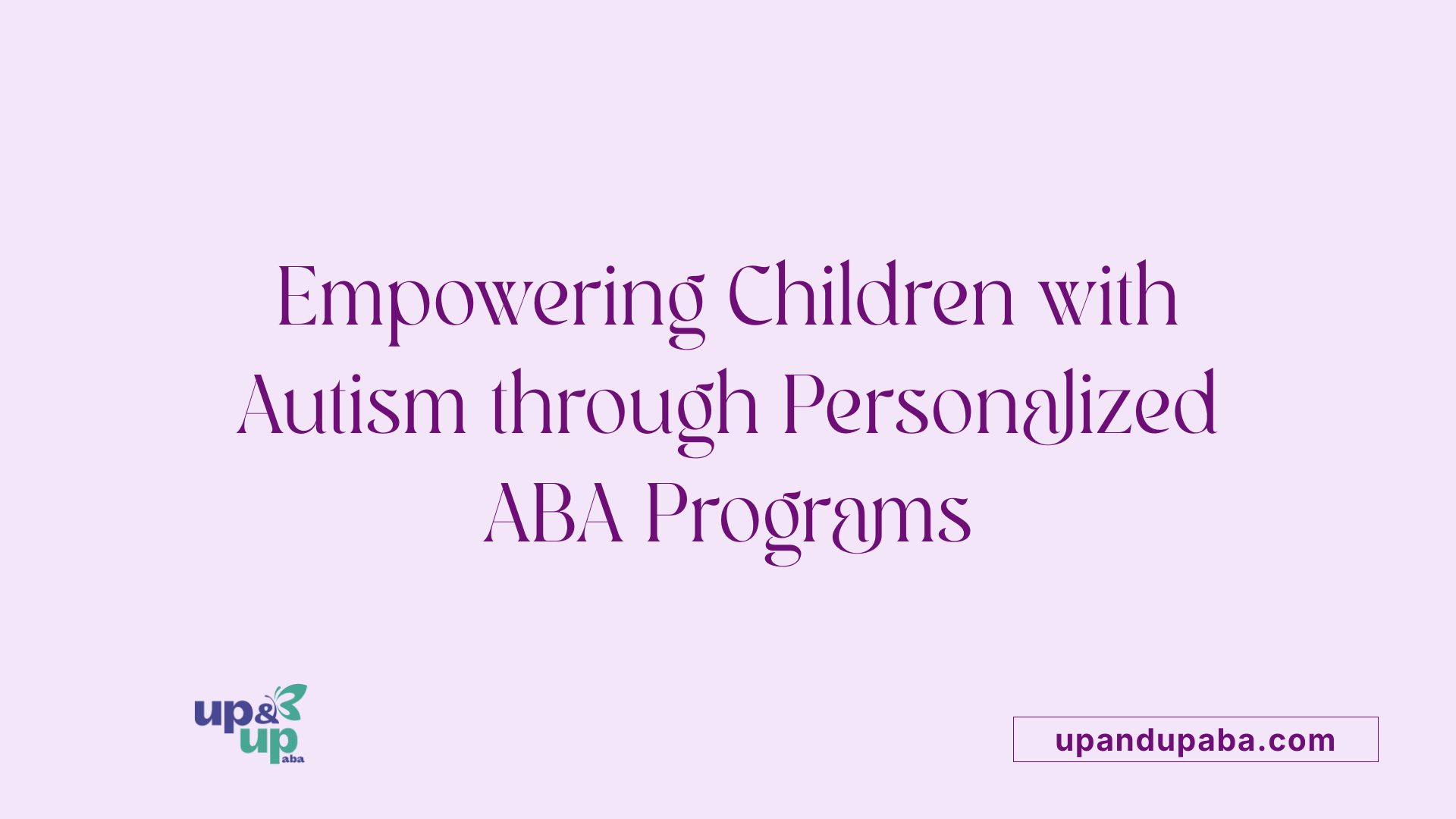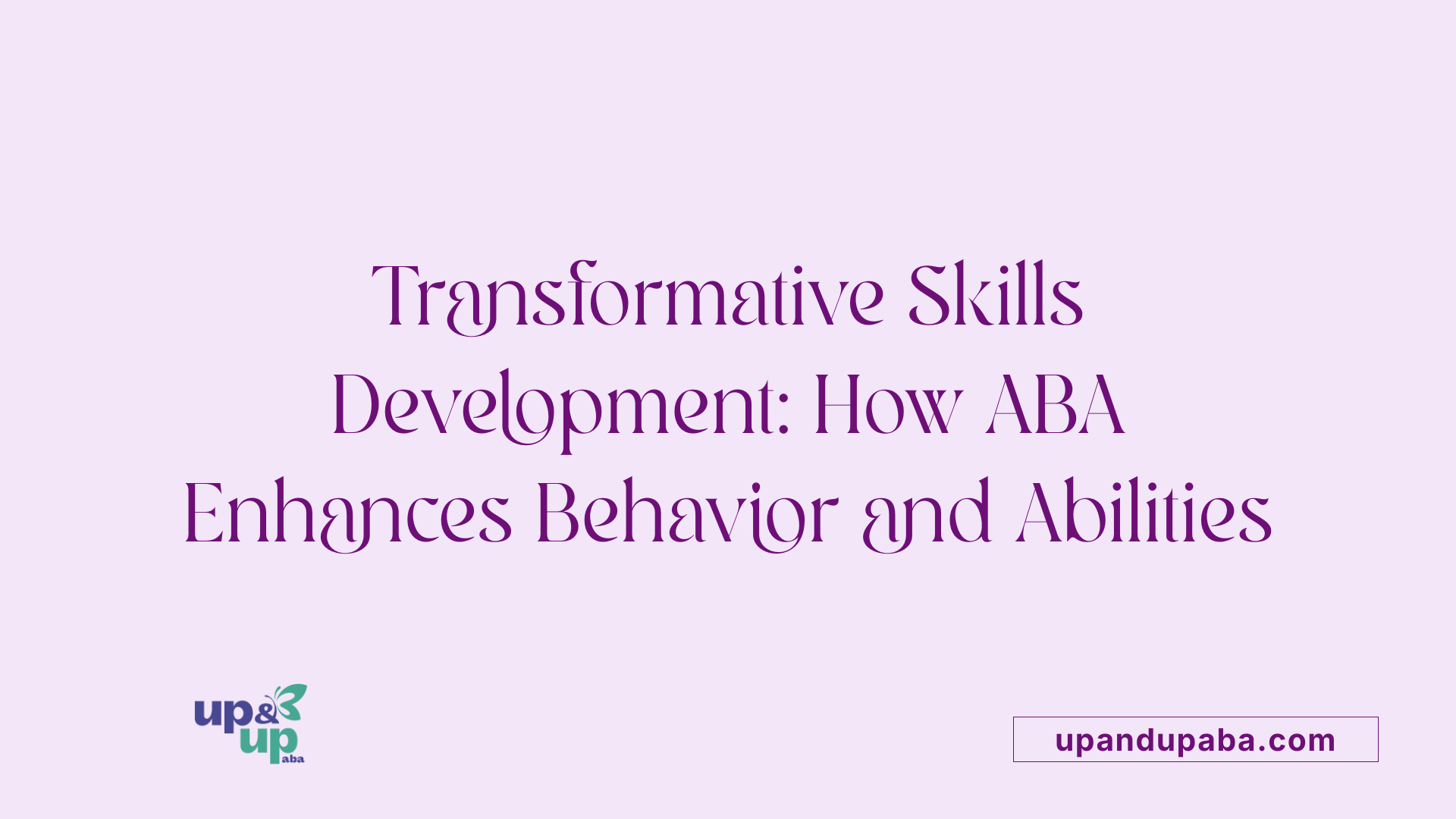Benefits of ABA Therapy
Transformative Impact of ABA on Autism Support

Understanding the Significance of ABA Therapy
Applied Behavior Analysis (ABA) is a scientifically validated, evidence-based approach that has revolutionized how children with autism develop essential skills, manage behaviors, and integrate into society. Supported by extensive research, ABA is recognized by leading health organizations as a highly effective intervention. This article explores the numerous benefits of ABA therapy, including how it enhances communication, social skills, independence, and overall quality of life for children with autism.
Core Benefits of ABA Therapy in Autism Support

What are the benefits of ABA therapy for children with autism?
Applied Behavior Analysis (ABA) therapy offers numerous advantages for children with autism. It is a scientifically backed, evidence-based approach that significantly improves communication, social skills, and essential daily living abilities such as toileting, dressing, and personal hygiene.
ABA uses techniques like positive reinforcement—providing a reward immediately after desired behaviors to encourage their repetition—and systematic skill teaching. When started early, especially before age six, intensive ABA intervention can lead to substantial developmental growth. Children often gain enough skills to participate in mainstream classrooms and community activities, enhancing their independence and social inclusion.
Personalized to each child's unique needs, ABA programs are implemented across various environments, including home, school, and community settings, under the supervision of trained professionals. Overall, ABA helps children develop self-sufficiency, improve social understanding, and enhance their long-term quality of life.
Scientific Evidence and Support for ABA

What evidence supports the effectiveness of ABA therapy?
A wealth of research studies and meta-analyses underscore the proven benefits of Applied Behavior Analysis (ABA) in supporting children with autism. These extensive investigations reveal that ABA interventions can lead to significant improvements in multiple areas of development.
Several studies report notable effect sizes—typically ranging from 0.65 to 0.74—which are considered medium to large. This indicates substantial gains in communication skills, expressive language, and cognitive functioning. For instance, children undergoing comprehensive ABA programs often show marked enhancements in socialization, adaptive behaviors, and language abilities.
However, the data regarding improvements in receptive language, daily living skills, IQ, and symptom severity are somewhat mixed, with some studies showing limited or inconclusive results. Many primary research articles emphasize the importance of rigorous experimental design and methodological quality to accurately measure outcomes.
Overall, the accumulated evidence lends strong support to ABA as an effective, scientifically grounded intervention. It has demonstrably facilitated growth in intellectual, communicative, and social domains, making it a cornerstone of autism treatment strategies.
What organizations endorse ABA as an effective treatment?
Endorsements from leading health and medical organizations reinforce the credibility and importance of ABA therapy. The American Academy of Pediatrics (AAP) and the U.S. Surgeon General have officially recognized ABA as a scientifically supported and effective treatment option for children with autism.
These endorsements are based on comprehensive reviews of existing research and clinical practice data, which affirm that ABA can significantly improve core challenges associated with autism. The support from such reputable bodies underscores the therapy's status as a proven, reliable intervention that promotes meaningful developmental progress.
In conclusion, substantial scientific research coupled with endorsements from authoritative organizations consistently validate ABA therapy’s role in optimizing outcomes for children across multiple developmental domains.
Additional Benefits and Practical Aspects of ABA

How does ABA therapy improve behaviors and skills?
ABA therapy enhances behaviors and skills by applying the principles of learning and behavior science. It relies on data-driven approaches to develop personalized strategies. Positive reinforcement is a cornerstone, encouraging children to engage in desirable behaviors. ABA systematically teaches new skills across various areas such as communication, social interaction, and independence.
By analyzing what happens before and after a behavior, therapists understand its purpose and can modify it appropriately. They often break complex skills into small, manageable steps and use methods like discrete trial training and natural environment teaching to maximize learning. As children practice and succeed, they develop vital abilities, reduce harmful behaviors, and learn to apply their skills across different settings. This process fosters greater independence and enhances overall quality of life.
What are the four main functions of behavior addressed in ABA?
In ABA, understanding why a behavior occurs is crucial. The four main functions include gaining attention, escaping or avoiding tasks, accessing tangible items or activities, and providing sensory stimulation.
- Attention-seeking behaviors might include acting silly, tantrums, or shouting.
- Escape behaviors are attempts to avoid unpleasant tasks or situations, like tantrums or withdrawal.
- Tangible behaviors involve requesting or grabbing preferred items.
- Sensory behaviors are repetitive actions such as hand-flapping or rocking, which provide internal stimulation.
Recognizing the function of these behaviors helps in designing interventions that teach alternative, appropriate responses serving the same purpose. Targeted plans are then created to replace problematic behaviors with functional ones, ensuring effective and humane modification.
How does ABA promote independence in children with autism?
ABA promotes independence by teaching essential life skills tailored to each child's needs. These include self-care routines like dressing, grooming, toileting, and eating. Therapists break skills into small steps, offer repeated practice, and reward successful attempts to encourage mastery.
Furthermore, ABA supports development of self-regulation and social skills, enabling children to communicate their needs effectively and make decisions. As children acquire these skills, they become more capable of managing daily tasks independently, which boosts their self-esteem.
Achieving greater independence allows children to participate more actively in family, school, and community settings. It lays the foundation for lifelong functional skills essential for a fulfilling and autonomous life.
How do behavioral assessments enhance ABA intervention?
Behavioral assessments serve as the foundation for personalized ABA treatment. They involve carefully observing and analyzing a child's behaviors to determine their causes and functions. Techniques like functional behavior analysis help identify triggers and motivating factors behind problematic behaviors.
This assessment data guides clinicians in developing targeted intervention plans tailored to the child's specific needs. Ongoing data collection tracks progress, helping professionals modify strategies to optimize outcomes.
Effective assessments ensure ABA therapy is adaptable, evidence-based, and focused on meaningful change. They maximize the therapy's impact by enabling precise, individualized support that addresses both behavioral challenges and skill development.
What is the role of parent and caregiver involvement in ABA?
Parents and caregivers are vital collaborators in ABA therapy. Their involvement includes participating in training sessions to learn ABA principles and strategies. By applying these techniques consistently at home and in other settings, they help reinforce new skills and behaviors.
Active participation ensures that skills learned during therapy generalize beyond clinical sessions, fostering stability and continuous growth. Caregivers also play a key role in managing behavior challenges by implementing proactive strategies, which reduces frustration and increases overall progress.
This teamwork approach enhances the child's development and reduces parental stress. It empowers families, fosters a sense of shared purpose, and creates a supportive environment that sustains long-term progress.
How does ABA improve quality of life for children and families?
ABA therapy significantly enhances the overall well-being of children with autism and their families. By teaching communication, social skills, and daily living tasks, children gain greater independence and participate more fully in life.
Behavior improvements, such as reduced tantrums and aggressive episodes, make daily routines smoother. Successfully acquiring skills like self-care and social interaction increases children’s confidence and happiness.
For families, ABA reduces stress by providing practical strategies and clear goals. Parent training helps caregivers respond effectively to challenging behaviors, fostering a positive home environment.
Ultimately, these improvements contribute to a more inclusive, supportive community, allowing children to reach their potential and enjoy a better quality of life.
Empowering Children, Supporting Families
The benefits of ABA therapy are well-documented and multifaceted, offering children with autism critical skills that foster independence, communication, and social participation. With its strong scientific backing and customizable approach, ABA continues to be a leading intervention in promoting meaningful developmental progress. When started early and conducted intensively, ABA can significantly enhance the long-term outcomes and quality of life for children and their families. Ongoing research and innovations further support the value of ABA as a cornerstone of autism intervention, emphasizing its role in helping children achieve their full potential and thrive in their communities.
References
- The Top 10 Reasons Children With Autism Deserve ABA - PMC
- Applied Behavior Analysis (ABA) - Cleveland Clinic
- 6 Life-Changing Benefits of ABA Therapy for Children with Autism
- Benefits of ABA therapy: 4 benefits you should know
- 7 Surprising Benefits of ABA Therapy for Kids You Need to Know
- 5 Benefits Of ABA Therapy For Autism - Surpass Behavioral Health
- [PDF] 5 Benefits of ABA Therapy for Children with Autism & Their Families
- Top 10 Benefits of ABA Therapy | Blossom Children's Center
- Benefits of ABA Therapy - Blue ABA



